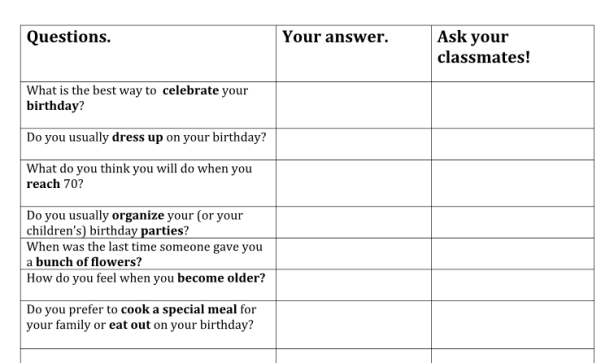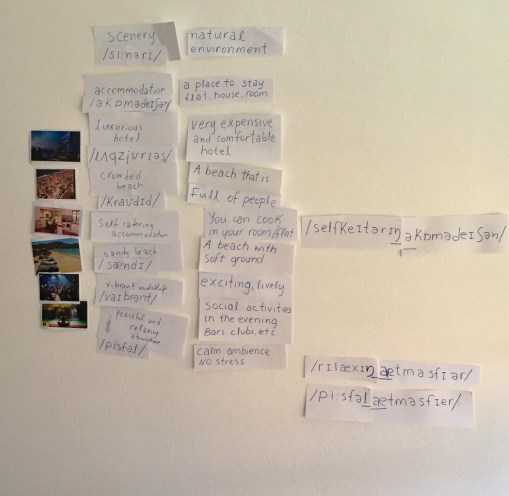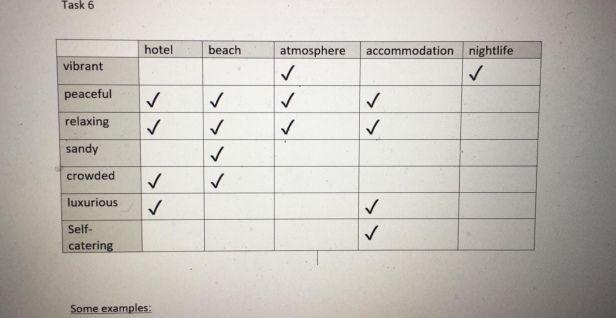And so it begins…
After 5 years of post-CELTA teaching experience, 6 months of studying hard for module 1 and 9 months of working on my module 3 assignment, it’s time to deal with the DELTA nightmare; module 2.
My path led me to International House Barcelona and so far, I am more than happy with my choice. They are running a blended course for the first time, which has an online component and a face-2-face phase. From February to August, I’ll be writing my background essays and PDA. Then, I’m going to teach my lessons and write my lesson plans and post-lesson reflections in September. Since I live in Tarragona, I was able to be observed teaching my group there , both for the diagnostic and LSA1. I will also have my experimental lesson with the same group.
And now let’s cut to the chase…
I chose to focus on Lexis, both for my diagnostic and LSA1. I thought it was a good idea to choose the same area, since when you do your diagnostic, you get some useful feedback which you can use in your same-area LSA. It turned out to be a wise choice..
My Diagnostic
My diagnostic went really well. I chose collocations in the field of birthdays. I used a reading text from New Cutting edge pre- intermediate which was really interesting. It described how birthdays are celebrated in different parts of the world. I activated interest and previous knowledge using some photographs of different birthday traditions in Japan, Latin America, Germany, etc. Then, students read the text and matched each paragraph to a picture. There was one distractor- one paragraph did not have a picture match. Students did an activity from the book; matching the collocations to their meaning and I also encouraged them to find more birthday-related collocations in the text. The final stage was to complete a questionnaire, where I highlighted the collocations for students to notice. After they had answered the questions, they mingled, asked each other and wrote down some answers.

My tutor’s feedback was really positive and encouraging. She suggested the following areas for development:
• Although she loved the questionnaire, she suggested using a freer activity at the end; I didn’t, because my group is mixed-ability, A1-B1 and I usually assign some writing for homework, as a freer task.
• Dealing better with emergent language, not just focusing on form, but helping learners develop more vocabulary.
• Differentiating materials or activities to cater for all levels.
• Experimenting with less homogeneous grouping, not just grouping by level.
My LSA1
I focused on adjective-noun collocations in the context of holidays. My target items were:
• Crowded beach
• Sandy beach
• Vibrant nightlife
• Self-catering accommodation
• Peaceful atmosphere
• Relaxing atmosphere
• Luxurious hotel
One of my main aims was to increase learners’ awareness of adjective-noun collocations, so I had two activities to help them become more collocation-curious.
I differentiated materials, designing 3 handouts; one for strong learners, one for average and one for weaker learners.
I launched the lesson by asking learners what is important to them when they go on holiday. There were two tables in every handout for this task: the first provided some ideas, e.g., scenery, sightseeing, the food, the accommodation.
The second table provided some useful expressions, different types for each level, e.g. the first thing I do when I go on holiday is.. or -ing is really important to me.. I don’t really care about…
Once they shared in pairs, they also shared in open class; this is a good technique and it will make your tutor happy, as you are repeating the task. I gave some good feedback on language there.
Next, I told them I would read to them about a holiday I had and they would have to understand if I enjoyed it. No other task, just to process for meaning.
Then they listened again to complete a gap-fill. For stronger learners, I had extracted both elements of adjective-noun collocations from the text and provided no help. For average learners, I had extracted the adjectives and put them in a table. For lower learners, I had extracted the nouns, and put them in a table. It turns out that the task was effectively designed, as it provided good support for weaker learners and a reasonable challenge for the strong ones, as my tutor commented.
After that, we moved to MFP. I gave weaker students photos and average-strong students got definitions and I asked them to match them with the right collocation on the whiteboard. I concept-checked by eliciting antonyms, e.g. what is the opposite of a crowded beach? Empty, deserted beach, etc. That was excellent according to my tutor, as they were making use of what they already know and thinking in collocation mode.
I modelled and did silent drilling first, i.e. allowing them to just hear it from me 2-3 times before repeating. I focused on catenation between adjectives and nouns in peaceful atmosphere and relaxing atmosphere, as I always make them aware of features of connected speech in my lessons. The whiteboard looked something like that:

When I was done with that, we moved to collocational competence. I gave them a grid with the adjectives and nouns and asked them to create more collocations with the given words.
Then, I projected the key and dealt with any questions.

The next task, which was my favourite, was asking learners to go autonomous; to go to https://www.rhymezone.com/ or http://www.freecollocation.com/ and find more adjectives that collocate with atmosphere, nightlife, etc. Students found some lovely collocations and shared their findings in open class, which was really nice and rewarding… I do this often with them, and I would advise you against doing a complicated activity for the first time when you are being assessed. Try it a couple of times first, and make sure your learners know what to do.
And finally..the free task. I asked students to talk about a holiday they had, using some of the collocations. I applied fluid grouping, i.e. mixing weak with strong students. I had provided different sentence openers in their differentiated materials, so weak students had a lot of scaffoliding to help them prepare their speaking. I gave a couple of minutes for preparation, however, some students were too self-conscious and they started writing the story of their lives. I got a little anxious there.. I told them to just make notes or bullet points and not write entire sentences. I rushed this stage a bit, then they started talking in groups, where I monitored well and gave some individual feedback to some, prompted others to use collocations and answered some questions that came up. In the end, 3 students managed to talk about their holidays in open class, but only a couple of collocations came up. However, I mentioned this in my reflection and as it happens, it wasn’t a big problem, as the lesson was a very coherent whole and most importantly, student-centred. Only two criteria were partially met. And I’m proud to say, that in the next LSAs, I fully met all the teaching and planning criteria.
My essay partially met five criteria and fully met the rest. According to my tutor, I managed to analyse a relatively narrow area with a very good degree of depth and an impressive analysis, thoroughly backed up by key sources.
I got a Merit for both my essay and lesson. Very happy with the result! 🙂 If you are interested in reading my lesson plan and essay, send me a message!
Special thanks to Jim Fuller for his help!


I am interested in reading your essay and lesson plan.
LikeLike
Hi Harriet, I will email you a link soon 🙂
LikeLike
I’d be very interested in reading your essay and email. I’ve seen lots of grammar analysis but I’d love to see a good analysis of such a small pool of lexis, many thanks in advance.
LikeLike
Happy to share, Neil. Will email you a link.
LikeLike
This is all very interesting and useful. Thank you so much for sharing your experience! I’d love to read your lesson plan and essay.
LikeLike
Thank you for reading, Diana. I’ll email you a link. 🙂
LikeLike
I am interested in reading your essay and lesson plan.
Michaela
LikeLiked by 1 person
I would love to read your essay
LikeLike
Hello!
I’m interested in reading your essay and LP. Can you please share it?
LikeLiked by 1 person
Thanks for the input Rachel. Can I see your lesson plan and essay ? I’m contemplating going through DELTA in the future.
LikeLiked by 1 person
I would love to read your essay and lesson plan.
LikeLiked by 1 person
I’d love to read your essay and lesson plan 🙂
LikeLike
Wow! I’m having problems on how to start my first LSA. Could you possibly send me your LSA and lesson plan so I could have an idea of how should I write properly?
LikeLiked by 1 person
Hi Rachel, I loved your lesson. I’m doing Module 2 in June. I’m sure your lesson plan and essay will help. Would please send it to my email? I’d be more than greatful. Thanks.
LikeLiked by 1 person
Hi Rachel
I am interested in reading your essay and lesson plan.
LikeLike
Hi, I am interested in reading both 🙂
LikeLike
Hi Rachel
I am interested in reading your essay and lesson plan.
LikeLiked by 1 person
Hi Rachel, I’m interested in reading your lesson plan and essay. Thank you
LikeLiked by 1 person
I believe I’ve sent my LSA1 materials to everyone who’s left a comment. If you still haven’t received an email from me, please reply to this comment and let me know. 😉
LikeLike
Thank you. Much appreciated!
LikeLiked by 1 person
Hi Rachel!
I have recently started following your blog, as I am currently going through Delta, and it’s a treasure! Thank you so much for such useful content. I am doing lexis for my LSA1 and focusing on idioms specifically. I would love to read your lesson plan and essay and if you have any ideas of other resources, blogs, etc to follow, any suggestions are more than welcome. 🙂 Thank you!
LikeLiked by 1 person
Hi there! Sure, I’ll email you all my LSA1 materials now. I’ve also written this post on idioms https://teflzoneracheltsateri.wordpress.com/2020/10/09/teaching-idioms/ and this one on formulaic language https://www.eltas.de/2021/11/01/a-look-at-pedagogical-approaches-to-the-teaching-of-formulaic-language-fl/. This is a great resource for delta candidates https://eltconcourse.com/training/inservice/delta/delta_index.html. More DELTA bloggers here : Sandy Millin, Lizzie Pinnard, Jim Fuller-sponge ELT, Martin Hajek – TEFL in Colombia. These are must-follow blogs!
LikeLike
Excellent! Thank you so much for your prompt response and help! Can’t wait to dig in!
LikeLiked by 1 person
Να’σαι καλα και καλη επιτυχια!🙂
LikeLike
I would love to see your lesson plan and essay. Can you send them to my email too?
LikeLiked by 1 person
Done! Good luck 🙂
LikeLike
Hi Rachel, me too, its lucky for me to read your sharing here. I’d love to read your lesson plan and essay.
LikeLike
Hi Rachel,
Kudos to you. Really riveting and inspiring lesson.
I’d love to delve into your LSA and LP, please.
All the best.
Cheers,
Marcelo
LikeLiked by 1 person
Hi Marcelo! Just came back from Belfast, please give me a couple of days and I’ll send them to you👍🏻
LikeLike
Hi Rachel
I am interested in reading your LP and BE. Could you please send them to me?
LikeLike
Hi Rachel,
I’d love to have a look at your LSA and your lesson plan, if possible.
Thanks in advance and best regards,
Pilar
LikeLike
I would love to see your lesson plan and essay. Can you send them to my email too?
LikeLiked by 1 person
I am interested in looking at your essay and lesson plan. Sounds like you did a great lesson 🙂
LikeLiked by 1 person
Hi Rachel.
Thanks for sharing your lesson on adjective + noun collocations. Can you please send me a copy of your essay and lesson plan if at all possible? It would be a great help.
Thanks in advance,
Tom
LikeLiked by 1 person
I would love to read your BE and LP
LikeLike
Hello Rachel,
I would like to read your BE and LP in depth.
Thanks in advance,
LikeLike
Hello,
I would love to read both your LSA AND LP
LikeLike
Hi Rachel,
I am doing my LSA4 on have and take as delexicalized verbs. I would love to read your essay and lesson plan
my email: ms.fatimataha@gmail.com
LikeLike
Hi Rachel
If you’re still sharing the essay I’d be really interested in reading it. I’ve just started Module 2 with NILE. Like you I’ve done 1 and 3 first.
I can send you my email via LinkedIn if that works.
LikeLike
sent!
LikeLike
Hi Rachel,
Could you please share your essay and plan of ‘collocations’?
My email: uss2009@gmail.com
LikeLike
sent!
LikeLike
Hi Rachel,
I’m doing my LSA1 and am looking for some resources and sample essays to get some ideas from. Could you share your essay and plan with me please.
LikeLike
sent!
LikeLiked by 1 person
Dear Rachel,
May I ask you to email me your essay and your plan,please? I’m thinking of conducting a lesson on collocations for my external. Or is it too risky? Thank you.
LikeLiked by 1 person
Done 👍
LikeLike
Hi, Im interested in your choice of the topic, can you send me your lesson plan and essay please?
Don’t know which area I’d focus on, thought grammar is a good start. but very interested in collocations in a specified lexical set or use of discourse markers.
LikeLiked by 1 person
Done ✔️
LikeLike
Thank you very much😊
LikeLiked by 1 person
Really fruitful
would you plz mail me your LSA and LP?
mr.ahmedbinnasser@gmail.com
thanks in advance
LikeLiked by 1 person